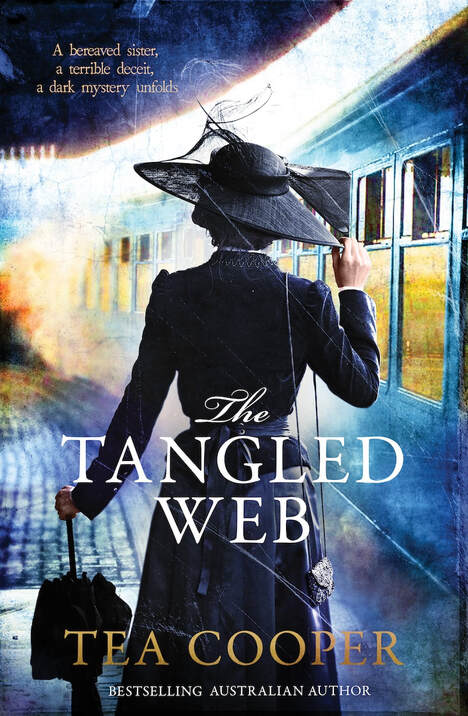The tangled web by Tea Cooper

The year is 1892, the setting, Sydney, and Maitland, New South Wales. Viola Oswald’s beloved brother Sebastian dies from the ‘royal disease’ after a tripping accident, which no blood transfusion can remedy, despite the brutal interventions of their surgeon stepfather Sinclair. Viola does not trust Sinclair, finding him more focussed on his medical notes than the welfare of his patients, and after overhearing a conversation between her stepfather and an accomplice, she determines to find out exactly what his experiments entail. Coded clues from her brother hidden in a favourite book lead her to suspect other lives are in danger.
In this work of historical fiction, Tea Cooper references 19th century theories on haemophilia, the hereditary disease seemingly only afflicting male progeny. Transfusion at that time involved direct human to human transfer of blood via syringe and a thick rubber tube. However, being ignorant of the existence of different blood types, the process was very hit-and-miss. Viola knows that Sinclair is obsessed with achieving medical glory in this field.
In disguise as a boy, Viola searches for a missing boy among the street urchins of Maitland, the boy who may have the evidence she needs to expose her stepfather. It is a time of poverty and life in the backstreets, women turning to prostitution in order to feed their children, gangs of boys roaming the alleys. Cooper excels in bringing this period of history alive, and Viola’s misadventures will keep readers engaged. There is blood, mystery, and brewing danger. Throughout it all Cooper manages to keep a light touch, which means that the novel is suitable for YA readers as well as adult readers of historical fiction.
Themes: Historical fiction, Mystery, Medical experiments, Blood transfusions, Poverty, Street kids.
Helen Eddy